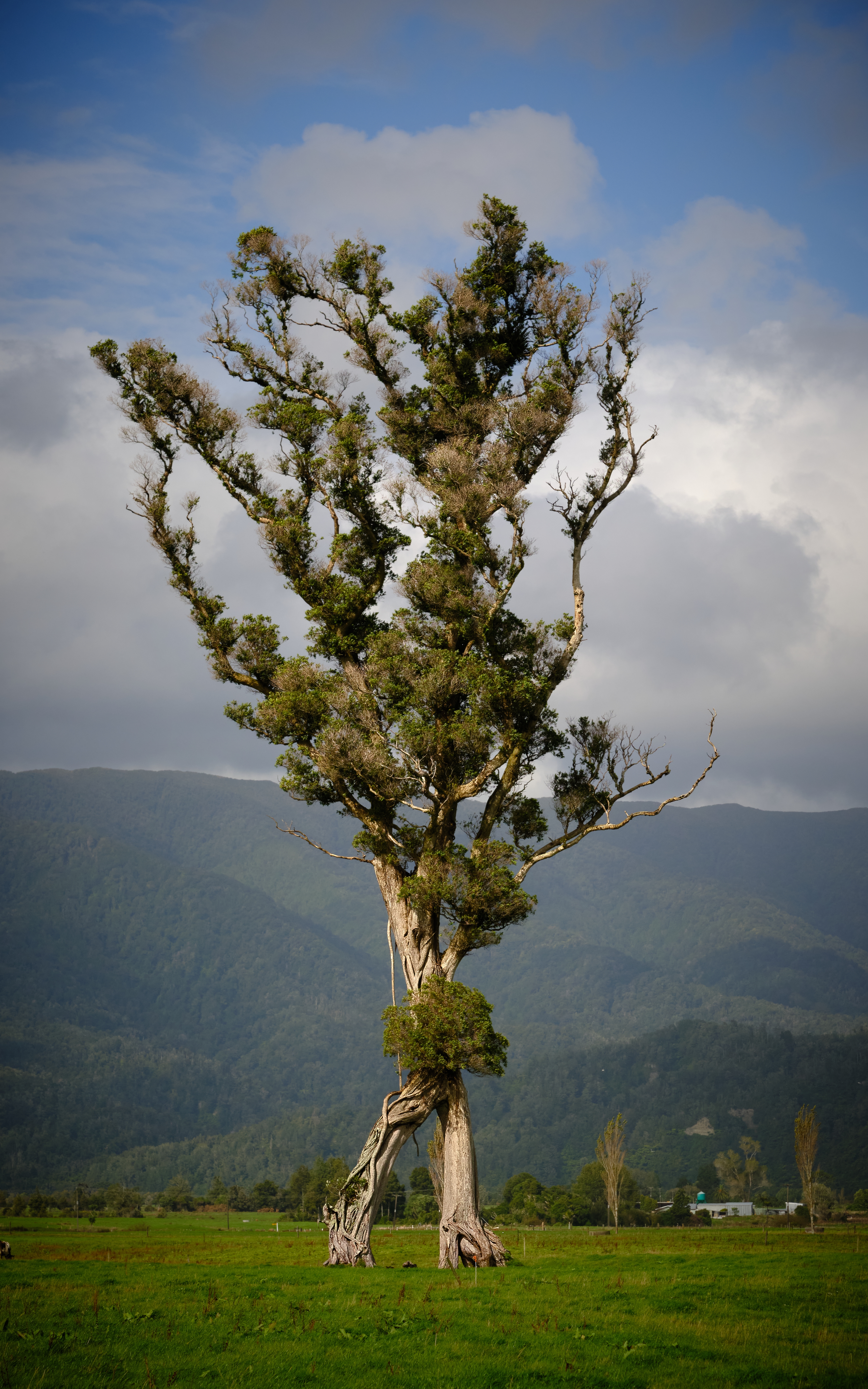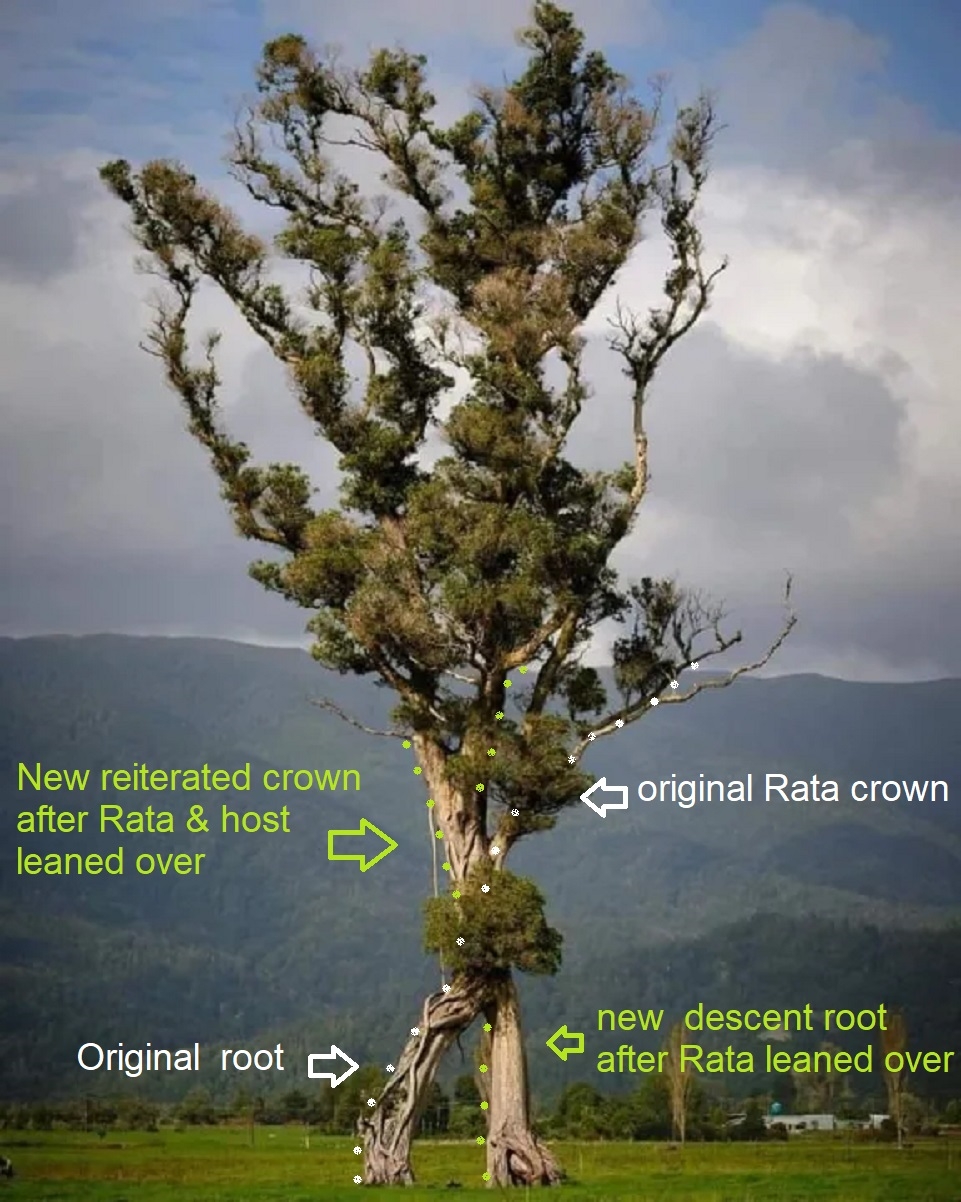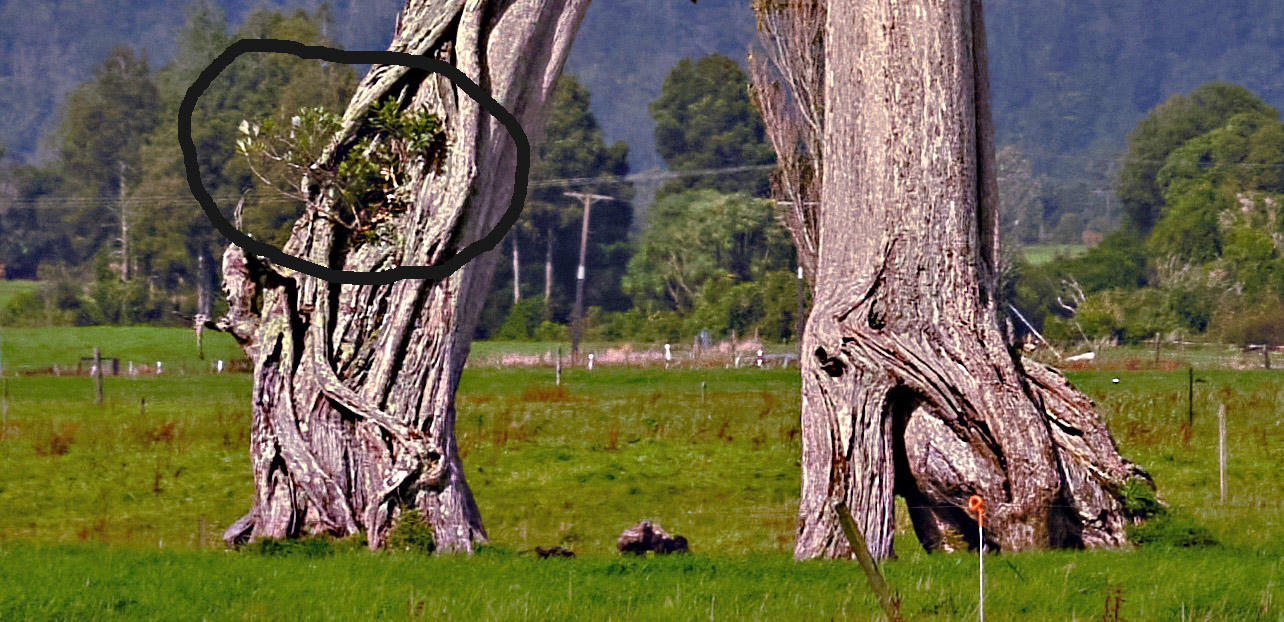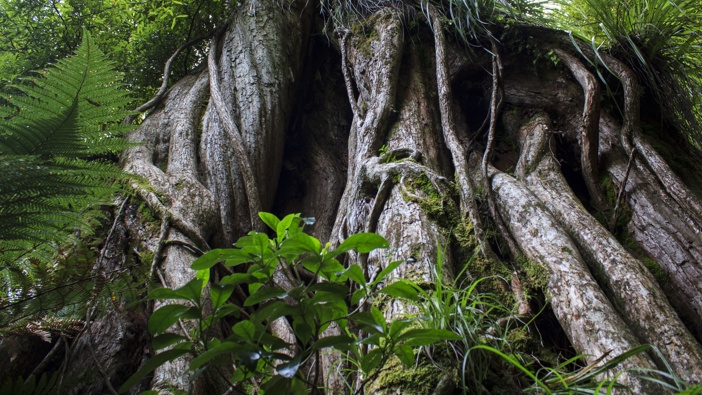A few weeks ago, the New Zealand Arboriculture Association stunned New Zealanders with a remarkable Tree-of-the-Year competition won by the walking tree. The magnificent Northern Rata (Metrosideros robusta) looks like it is walking on high heels (see Gareth Andrew’s stunning photograph).

As it happens, this rata species belongs to the myrtle group that includes pohutukawa and many different climbing rata, as well as Southern rata and the extremely rare Bartletts rata.
I love these trees; they are endemic to New Zealand. Yes, only in New Zealand! This is where they evolved.
Some Northern Rata germinate from the ground like any other boring tree, but the majority of Northern Rata is known as a Hemi-Epiphyte (not a true strangling epiphyte that uses another tree for support and “lifestyle”).
It usually starts life from a seed that lands somewhere in the canopy of a host tree (many different tree species can be a host: from podocarps to tawa, mahoe, beech, kamahi and even tree ferns.
The magic starts when the germinated plant becomes an epiphyte (perching plant) for the beginning of its life, sending roots downwards to the ground – Takes Ages!! Often many decades. The descending roots are usually “fused” together and become a tough root system.

It also sends some shoots with leaves upward to the lighter parts of the host trees’ canopy. The rata has a rather constant root-to-shoot ratio as it is growing up.
One of the roots will become dominant as it reaches the soil where the nutrients are; the shoots then have plenty of food to race up to the top of the host tree and create their own Photosynthetic factory.
Rata can be hundreds of years old – perhaps beyond 1000 years!
The original “host tree” usually dies well before the Rata is getting to its maximum size. As the host decays, the rata will “stand on its own feet” and is left with a hollow trunk – a great home for bats and native birds in the forest!
Why does this tree look like a “walking” Tree?
Look again at the picture: old, descending fused roots on the left and a rather smooth “trunk” on the right.
Rata (and pohutkawa) are able to grow new roots when and where they are needed from anywhere on the tree – and they can do so relatively quickly.
The hypothesis (proposed by my old mate Stephen King) is that the old Rata tree developed a “lean” when the old host tree perished. A new vertical root (the right one) became a smooth trunk to support the new vertical crown.

And just to make things a bit more extraordinary in the story of this walking tree: Take a look at the old fused roots on the left: This is now the spot where a pohutukawa decided to start its own life on the ancient roots of that walking Northern Rata!

If you are interested in trees and spectacular notable trees, visit the notable trees register.
More info on Rata and other Metrosideros species, cruise to the Project Crimson Website.
And grab a copy of Philip Simpson’s book Pohutukawa & Rata – New Zealand’s iron-hearted Trees.
LISTEN ABOVE
Take your Radio, Podcasts and Music with you










